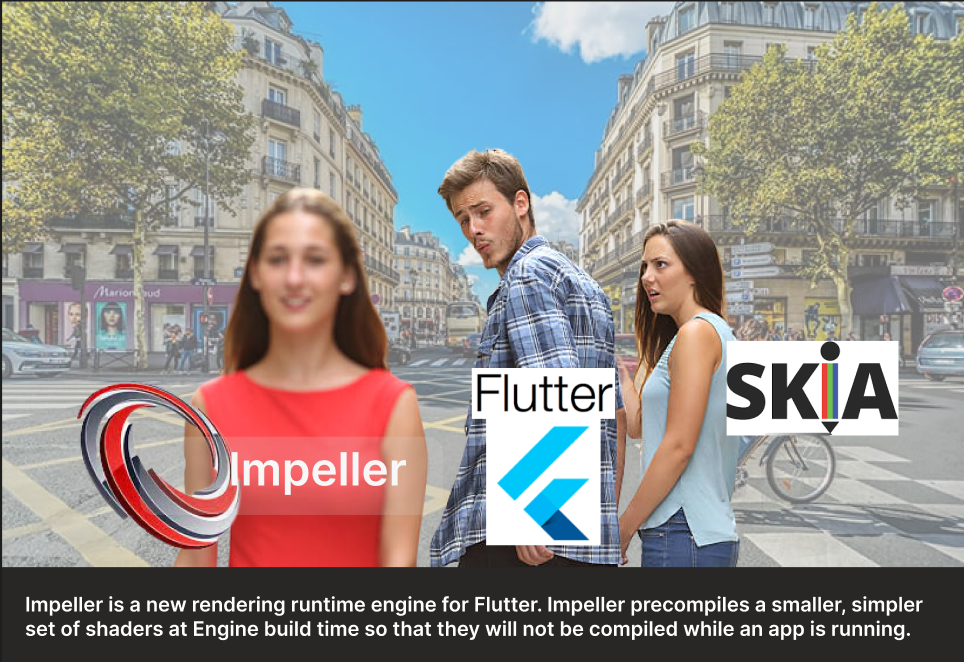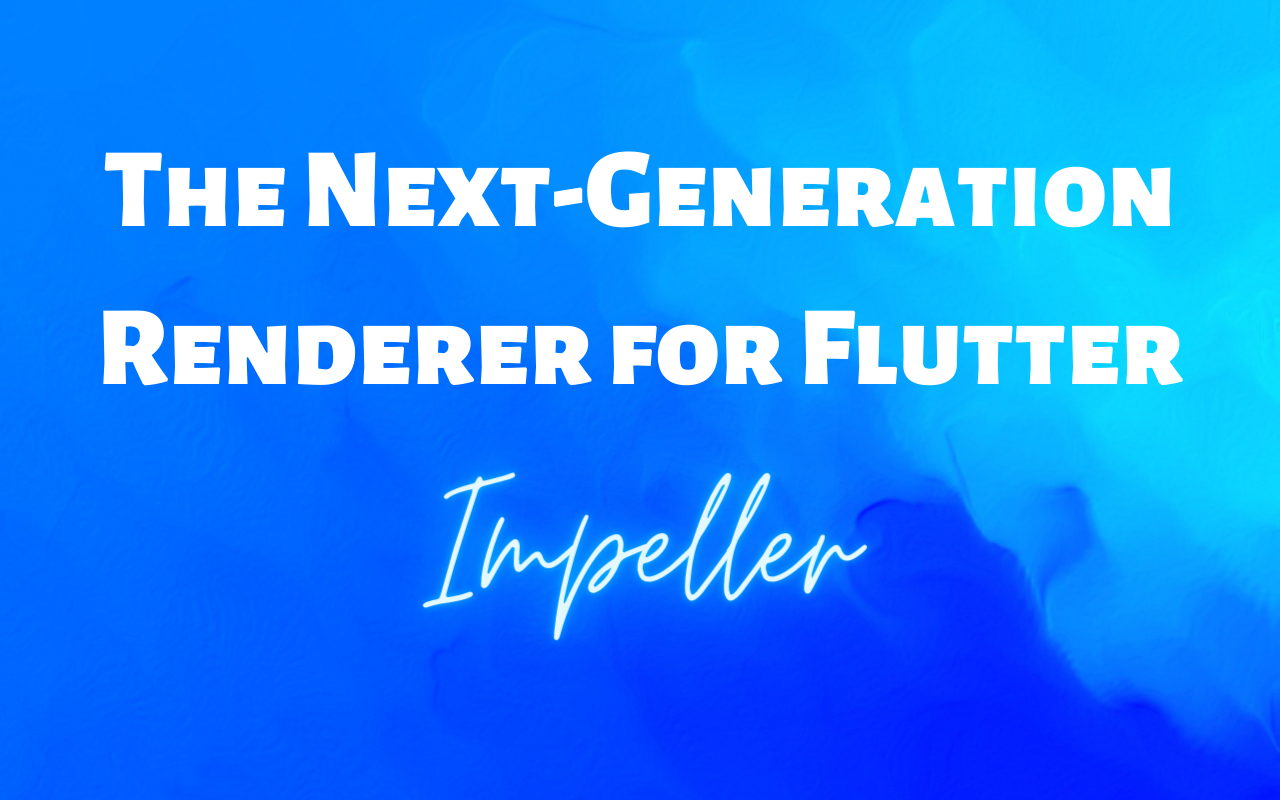Impeller: Revolutionizing Cross-Platform Flutter App Development
Table of contents
No headings in the article.

Flutter has emerged as a popular framework for building beautiful and performant mobile applications across multiple platforms. However, developing cross-platform apps often comes with challenges such as platform-specific code, varying UI/UX guidelines, and the need for multiple codebases. Enter Impeller, a groundbreaking tool that aims to revolutionize cross-platform Flutter app development. In this blog post, we will explore Impeller and its potential to streamline and enhance the app development process with its innovative features.
- Simplified Development Workflow:
Impeller simplifies the cross-platform Flutter development workflow by providing a unified codebase that works seamlessly across iOS and Android platforms. With Impeller, developers can write code once and deploy it on both platforms, significantly reducing development time and effort. The tool abstracts away platform-specific complexities, allowing developers to focus on building robust and feature-rich applications.
- Native Performance:
Impeller takes advantage of Flutter's native performance capabilities to deliver high-performing applications. By optimizing the underlying platform-specific code, Impeller ensures that the apps built using the tool have native-like performance and responsiveness. This enables developers to create seamless user experiences without compromising on performance.
- Customizable Platform-Specific UI/UX:
While Impeller promotes code sharing, it recognizes the importance of platform-specific UI/UX guidelines. The tool provides developers with the flexibility to customize and tailor the user interface for each platform. With Impeller, developers can easily adapt the app's appearance to match the look and feel of iOS and Android, resulting in a consistent and native experience for users.
- Live Hot Reloading:
Impeller takes advantage of Flutter's powerful hot reloading feature, allowing developers to instantly see the changes made to the code without restarting the app. This feature greatly enhances the development process, enabling developers to iterate and experiment with UI elements, layouts, and functionalities in real-time. The rapid feedback loop speeds up development cycles and fosters productivity.

- Streamlined Integration with Native Code:
Impeller seamlessly integrates with existing native codebases, enabling developers to leverage native features and functionalities effortlessly. This feature is particularly useful when developers need to access platform-specific APIs or libraries that are not available in Flutter. By bridging the gap between Flutter and native code, Impeller provides a unified development environment and eliminates the need for complex workarounds.
- Developer-Friendly Tooling:
Impeller offers a comprehensive set of developer-friendly tools and utilities to streamline the development process. The tooling includes advanced debugging features, performance profiling, and code analysis tools that help developers identify and fix issues quickly. With Impeller, developers can maintain code quality, improve app performance, and ensure a smooth user experience.
.png)
Conclusion:
Impeller represents a significant leap forward in cross-platform Flutter app development, addressing the challenges faced by developers while building applications for iOS and Android. With its unified codebase, native performance, customizable UI/UX, live hot reloading, seamless native code integration, and developer-friendly tooling, Impeller empowers developers to create high-quality, feature-rich apps efficiently. As the Flutter ecosystem continues to evolve, Impeller's innovative approach will undoubtedly play a pivotal role in shaping the future of cross-platform app development.